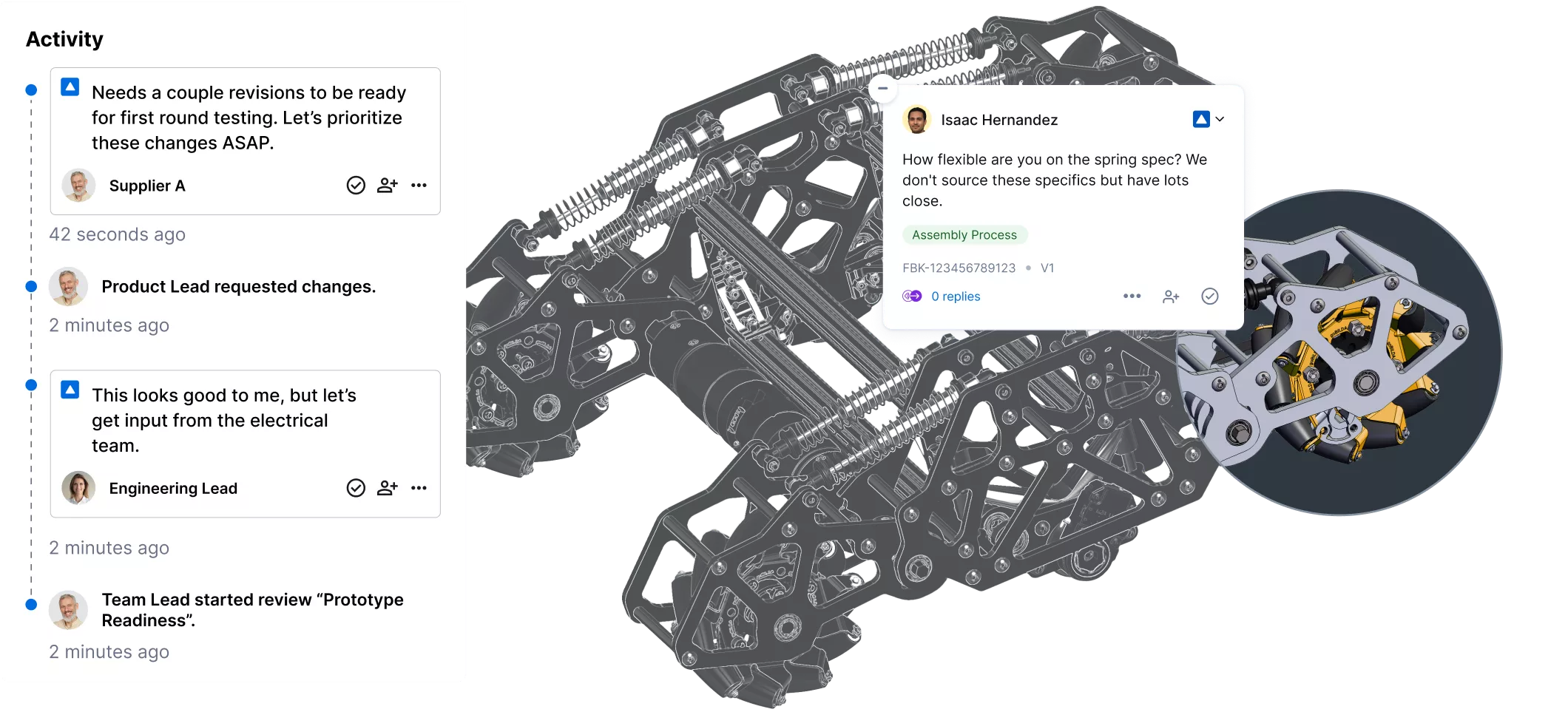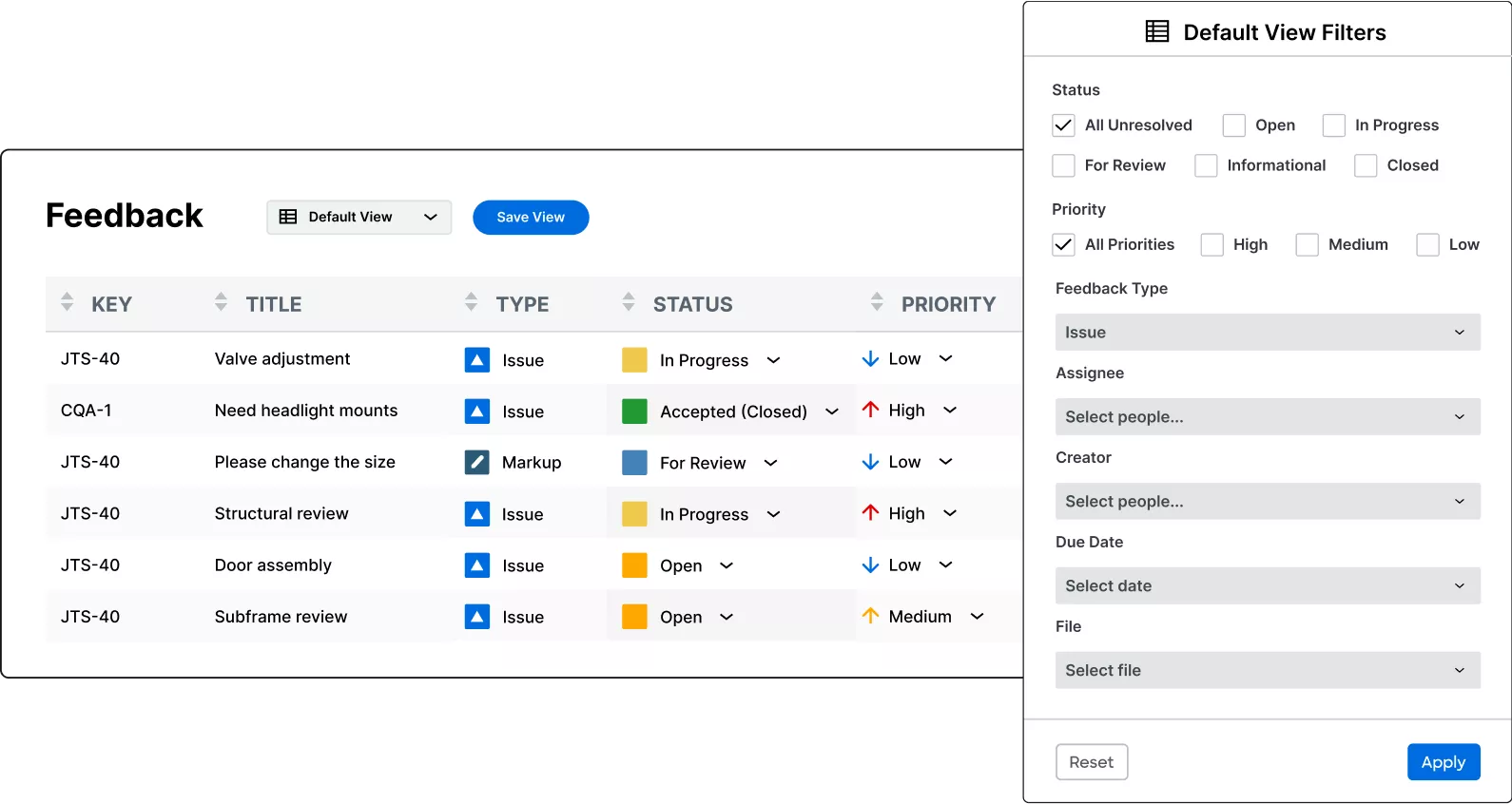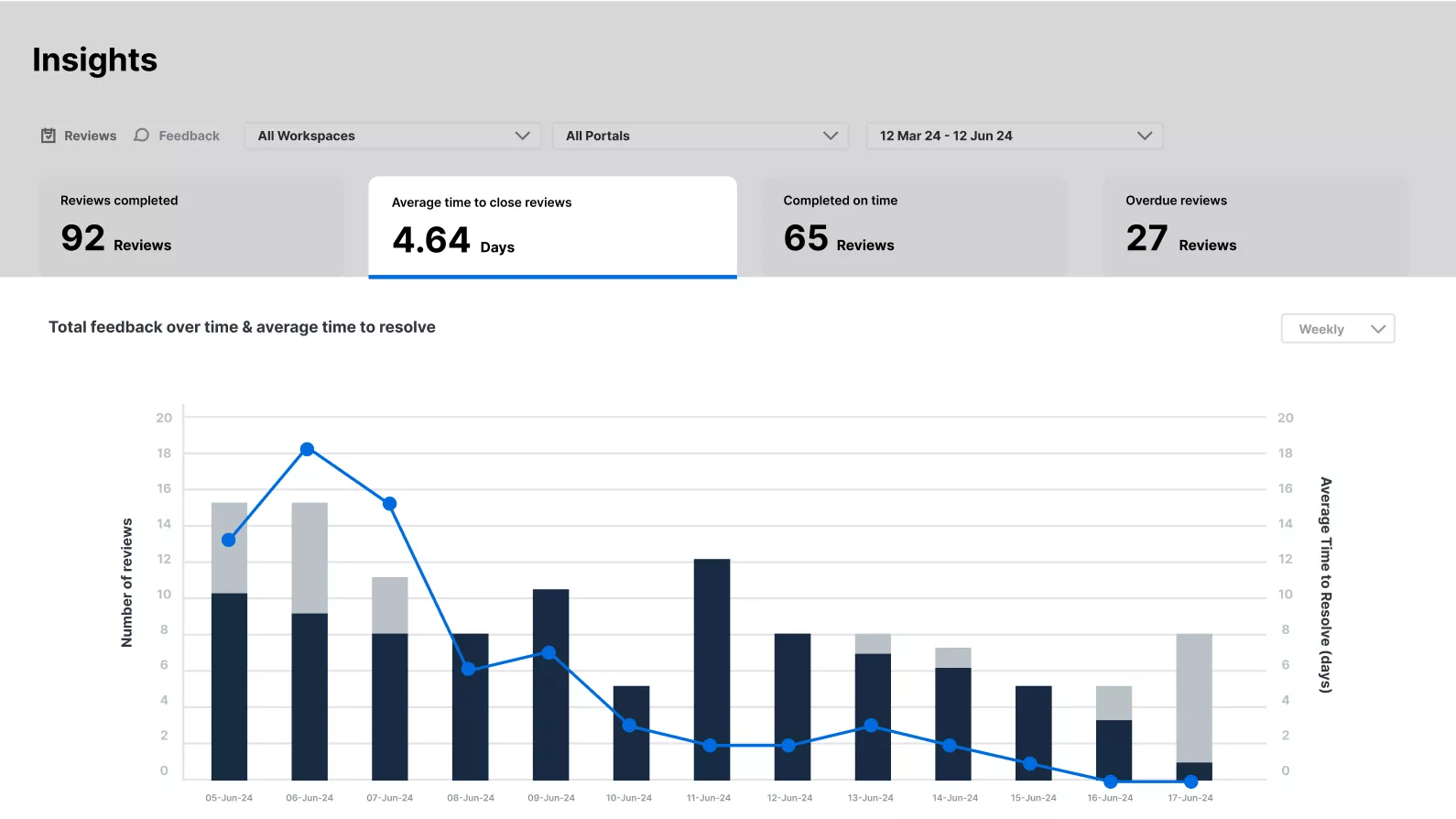You’re catching errors in pilot builds that you could be catching in design review.
GET A DEMO
Picture this: after months of new product development (NPD), you’ve reached your first pilot build. Pretty soon you’ll be launching a new product to market. Exciting, right? Unfortunately for many engineering teams, what comes next can be stressful. Pilot builds late in NPD cycles often uncover dozens of errors, leading to significant rework. Not only rebuilding prototypes, but updating models, redoing drawings, and reordering parts from suppliers.
These rework cycles are frustrating – and they can add months to an NPD cycle. If you didn’t plan for that, then you risk launching your product late (or rushing later stages, like testing).
What if you could cut those late stage errors in half?
The best way to prevent late stage errors is to catch them earlier. Before you ever start a pilot build, you probably complete dozens of design reviews – with CAD models and, later, drawings. By making those reviews more effective, you can design out errors, before they pop up in a build.
Here’s a stat that might surprise you:
We surveyed 250 engineering leaders and they told us they believe that 60% of late stage errors could be prevented by improving design review quality.
How to improve design review quality and catch more errors
What’s preventing design teams from catching more errors earlier in product development? It all comes down to how teams approach design reviews throughout their stage gate process – during stages like early design, detailed design, and/or design validation.
One of the biggest issues is that documenting and tracking design review feedback is too admin intensive.
Did you know that 43% of feedback generated in design reviews is never documented or actioned? That’s a lot of opportunities for an error to slip through the cracks (and pop up later, in a pilot build). Here’s what’s causing it:
- Feedback is captured in handwritten notes, Excel spreadsheets, and emails – without any context to help clarify design intent. This makes it impossible to follow up later.
- Sometimes, the engineering team goes through the trouble of taking screenshots of CAD, so reviewers can mark them up in Powerpoint. But these screenshots can quickly become out of date.
- If feedback requires more discussion, that often happens over email – with no centralized tracking, it’s really easy for things to get lost.
This is why, when you do a review in CoLab, the software tracks and organizes everything automatically for you, as a byproduct of doing the work. Through automation, we’re helping engineering teams action the 43% of issues that normally slip through the cracks.
"It gives me a place to collaborate with my team on issues. We can debate changes right on the discussion thread for the issue itself until we come to a resolution. Then we’ve got an automatic record of our decisions right there. We document histories of everything automatically just by doing the work."


To catch more errors, you need to tap into more people’s expertise. But key people are often left out of reviews.
Design quality can’t be the sole responsibility of the engineering team. Cross functional experts on other teams like manufacturing or quality can help you catch more errors. Unfortunately, many teams don’t involve cross functional partners or suppliers in early reviews. And even the teams that do report getting little to no feedback. For example, only 20% of engineering teams report that they get useful design feedback from most or all of their suppliers.Most teams realize that cross functional feedback is valuable, but there’s no good way to get it.

When you make active participation easy, you maximize useful feedback.
Design review meetings should be your best opportunity to generate problem-solving ideas. Instead, they often become long meetings where only a few people participate and it’s only to point out more issues. It makes sense: only the person screen sharing CAD can really interrogate the model. They are doing a design review and everyone else is just watching one.
Using CoLab, everyone can interrogate the model on their own screen, while seeing other people’s feedback populate in real time. It’s engaging – and dare we say fun? Teams who use CoLab generate more feedback from more participants.

Thoroughly documenting feedback shouldn’t be a chore.
Most teams document their design feedback in spreadsheets, emails, or PowerPoint slides. Some teams even use free CAD viewers with markup features.
Problem is – this approach turns documentation into an administrative task. The more thoroughly you document, the more work you create for yourself and your team. And the more places they need to sift through to find the information that matters.
It disincentivizes thorough documentation and leaves room for errors to slip through the cracks.
With CoLab, reviews and decision making get tracked automatically as you do the work. Engineers can do what they do best, and CoLab will support them with record-keeping in the background.

Engineering teams get the data to objectively improve the review process.
Pinpointing bottlenecks in the review process – or understanding the real impact of continuous improvement – has always been a challenge. Why? Because engineering work takes place across untrackable communication channels. It’s not auditable, and you can’t get data on what’s happening and why.
CoLab’s gathers data about all of the human-to-human interactions that power your product decision making. That means you can objectively improve how your team evolves a design from concept to production validation.

Engineering teams are already preventing entire rework cycles with CoLab.
By making it easier for SMEs to participate in design review and automating how you capture and track feedback, you could prevent up to 43% of issues from even happening.
See how it would work for your team and get a custom demo.
